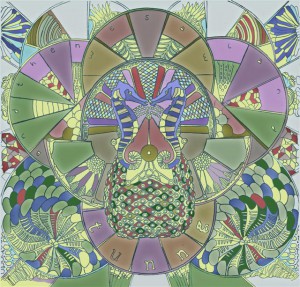 There’s nothing strikingly different about …And Then We Saw Land, Tunng’s fourth record. All of the main ingredients for a modern British folk album are present – the harmonies, cheerful melodies and casual banjo are all present and correct. Though there are, of course, the little moments that define the album clearly but briefly as a Tunng record, for the most part a blind taste test would leave even the most well-versed in the genre unsure as to which band they are listening to. Certain tracks, such as ‘It Breaks’ could just as easily be Make Model or any number of other, similar bands.
There’s nothing strikingly different about …And Then We Saw Land, Tunng’s fourth record. All of the main ingredients for a modern British folk album are present – the harmonies, cheerful melodies and casual banjo are all present and correct. Though there are, of course, the little moments that define the album clearly but briefly as a Tunng record, for the most part a blind taste test would leave even the most well-versed in the genre unsure as to which band they are listening to. Certain tracks, such as ‘It Breaks’ could just as easily be Make Model or any number of other, similar bands.
Nevertheless, a record cannot be judged on how easy it is to guess the artist – if that were the case The Cheeky Girls would have been the critical find of the century. No, rather than settling lazily on the fact that …And Then We Saw Land sounds like a great deal of already existing music, it’s worth asking how bad that really is? British folk at the moment is enjoying a bit of a renaissance. The genre has become accessible, and has managed to do so without sacrificing any of its values or more obscure instrumentations. Mumford & Sons are being played by Radio One on a daily basis, 6 Music’s plight is bringing more and more attention to the genres it represents. To sound like the epitome of folk is no bad thing – it means that the artist is listenable whilst also being truly representative of the modern genre. Tunng have certainly managed this, drawing on influences from the last thirty or so years of folk music – ‘October’ owes as much to Simon & Garfunkel as it does any artist from this century, a gentle and swooning song that will certainly have a part in sound tracking my autumn when the season inevitably rolls around. ‘Sashimi’ might even owe a small debt to The Who, but more importantly is as fresh as it is familiar. …And Then We Saw Land is an album that breaks no new ground, but is all the more listenable, all the more enjoyable, for that.
Listen on Spotify
Tunng’s MySpace
